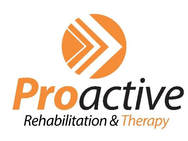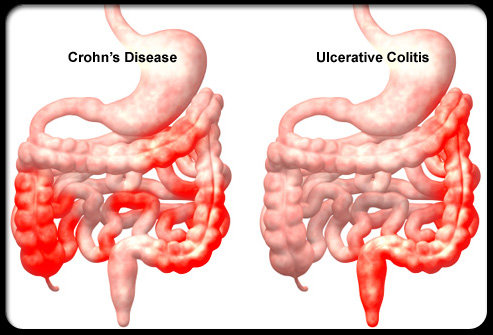Crohn's and Colitis Information
Crohn's disease is an inflammatory condition that affects any area of the gastrointestinal (GI) tract, from mouth to anus, but usually manifests most severely (in patches of inflammation) in the lower part of the small bowel and/or the upper end of the colon.
Crohn's inflammation can also penetrate the intestinal layers from inner to outer lining causing considerable distress. One out of four individuals with Crohn's develops perianal disease, which may involve painful, swollen skin tags, abscesses (large pus filled pimples), and/or fistulas (infections that have tunneled through tissues).
Ulcerative colitis affects a smaller area of the GI tract, at the colon (large bowel), rectum, and anus. Inflammation tends to occur only in the inner lining of the bowel tissue. Colitis has a common pattern of initiating at the rectum and moving upwards through the colon.
People suffering with ulcerative colitis may experience chronic bloody diarrhea, false urges to have a bowel movement, abdominal pain and cramping, nausea and vomiting, reduced appetite, weight loss, mild fever, anemia, and dehydration.
Crohn's inflammation can also penetrate the intestinal layers from inner to outer lining causing considerable distress. One out of four individuals with Crohn's develops perianal disease, which may involve painful, swollen skin tags, abscesses (large pus filled pimples), and/or fistulas (infections that have tunneled through tissues).
Ulcerative colitis affects a smaller area of the GI tract, at the colon (large bowel), rectum, and anus. Inflammation tends to occur only in the inner lining of the bowel tissue. Colitis has a common pattern of initiating at the rectum and moving upwards through the colon.
People suffering with ulcerative colitis may experience chronic bloody diarrhea, false urges to have a bowel movement, abdominal pain and cramping, nausea and vomiting, reduced appetite, weight loss, mild fever, anemia, and dehydration.
The Research
Medical Research has shown that Crohn's and Colitis sufferers can gain control over and minimized their symptoms to the point of remission by carefully managing diet, appropriate nutritional supplementation, physical activity, and other lifestyle factors.
Inflammatory Bowel Disease sufferers are beginning to share their personal stories of achieving lasting remission by learning to manage their symptoms through science based non-pharmaceutical approaches that improve their diet and lifestyle.
Unlike Entocort or anti-TNF drugs like Humira or Remicade, monitoring and amending your diet and lifestyle is completely safe, affordable, and promotes lifelong physical and mental wellness.
Inflammatory Bowel Disease sufferers are beginning to share their personal stories of achieving lasting remission by learning to manage their symptoms through science based non-pharmaceutical approaches that improve their diet and lifestyle.
Unlike Entocort or anti-TNF drugs like Humira or Remicade, monitoring and amending your diet and lifestyle is completely safe, affordable, and promotes lifelong physical and mental wellness.

